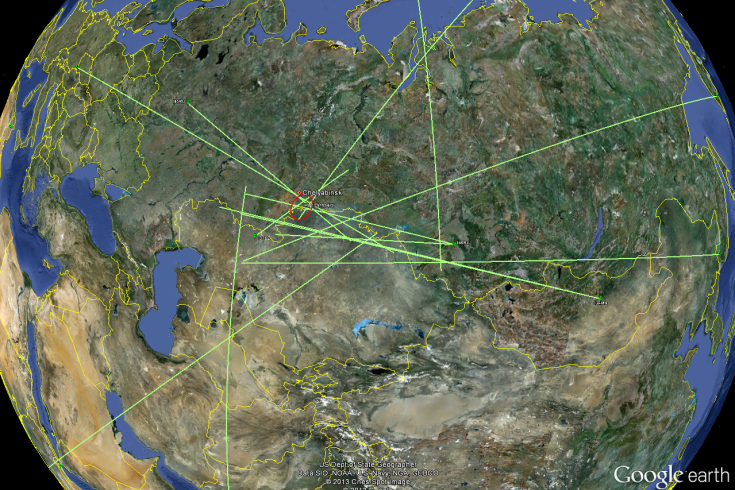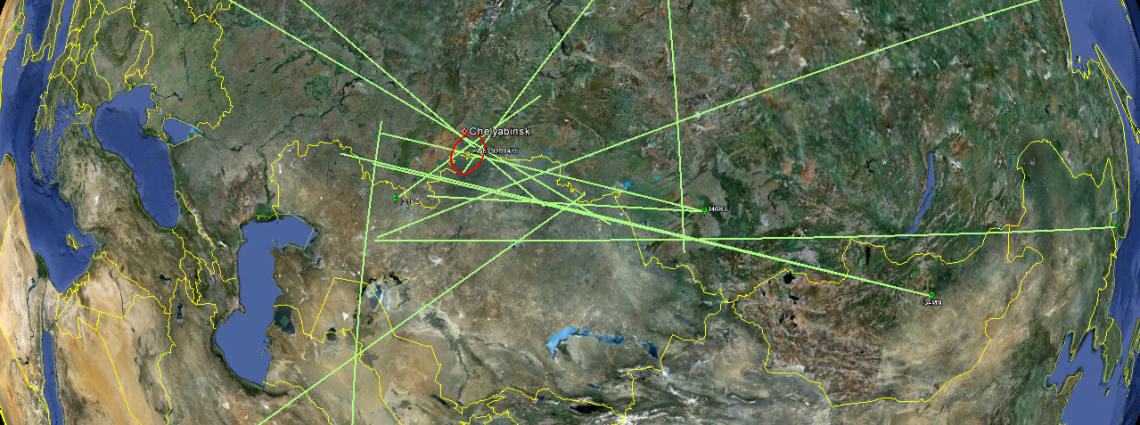CTBTO Infrasound Stations Detect Russian Meteorite Blast
Vienna, 18 February 2013
As many as 17 infrasound stations in the CTBTO’s International Monitoring System (IMS) recorded the infrasonic waves from the meteorite that broke up over Russia’s Ural mountains on 15 February 2013. The low frequency sound waves from the blast were detected at 03:22 GMT by the network designed to track atomic blasts across the planet. People cannot hear the low frequency waves emitted by the explosion but they were recorded by the CTBTO’s network of sensors as they travelled across continents.

CTBTO Infrasound Stations record the meteorite that broke-up over Russia’s Ural region - click to enlarge.
Infrasound monitoring
The CTBTO’s infrasound station at Qaanaaq, Greenland — featured in this video — was among those that recorded the explosion. There are currently 45 infrasound stations in the CTBTO’s network that measure micropressure changes in the atmosphere generated by infrasonic waves. Infrasound is one of four technologies used in the CTBTO’s network of sensors to monitor the globe for violations of the Comprehensive Nuclear-Test-Ban Treaty that bans all nuclear explosions. Atomic explosions produce distinctive, low frequency sound waves that can travel across continents. View animation.
18 Feb 2013
